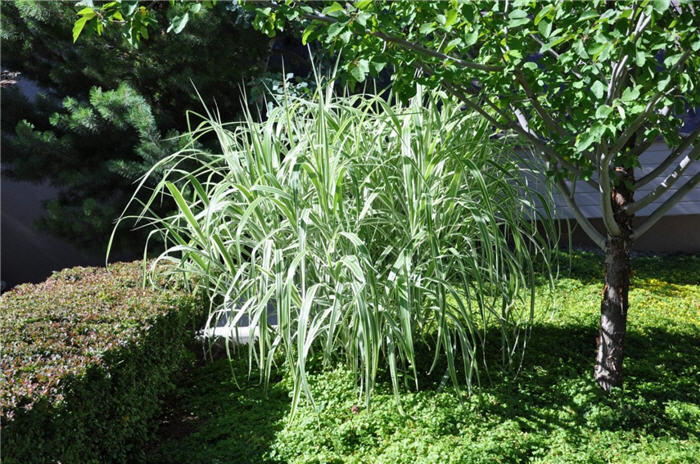| Botanical Name: Phalaris arundinacea var. picta | |
| Common Name: Ribbon grass |

-
Anatomy
-
Culture
-
Design
Plant Type
Perennial, Grass
Height Range
1-3'
Flower Color
White
Flower Season
Summer
Leaf Color
Green, White, Variegated
Bark Color
n/a
Fruit Color
n/a
Fruit Season
n/a
Sun
Half, Shade
Water
High
Growth Rate
Fast
Soil Type
Clay, Loam
Soil Condition
Average, Rich, Well-drained, Moist
Soil pH
Neutral
Adverse Factors
Invasive
Design Styles
Water Garden
Accenting Features
Unusual Foliage
Seasonal Interest
Spring, Summer
Location Uses
n/a
Special Uses
Container
Attracts Wildlife
n/a
Information by: Stephanie Duer
Photographer: wrong photo
Photographer: wrong photo
-
Description
-
Notes
Ribbon grass is a spreading grass that grows 2 to 3 feet, with its plumes appearing 12 to 18 inches above the foliage. Blades are green with white variegation and flower plumes are white and appear in June. Plants bleach to beige with the first frost. This is a very aggressive grass and careful thought should be given in its placement in the garden.
Grows best in half-sun to light shade, in fertile soil. The white foliage will burn in the summer heat, so plant it where it will receive mid-day shade. It will tolerate a fair amount of moisture, so would be appropriate planted by a water feature where it would benefit from the extra water. This is a spreading grass that can be aggressive, so confine it with drainage tiles or plant in containers. Avoid it's use along riparian corridor areas or in wildland interface areas. Mow in spring.